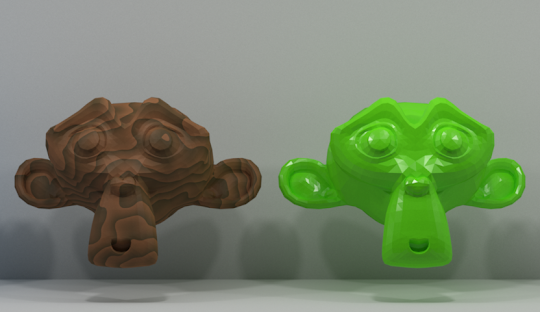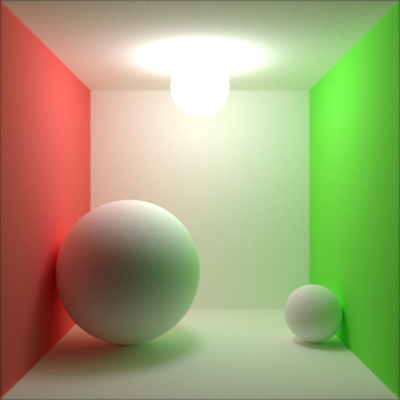Last year I implemented (see my blog posts
here and
here) a microfacet model for reflection and refraction based on the
2007 paper by Walter, Marschner, Li, and Torrance. In order to port my implementation of this BSDF to my bidirectional path tracer, I needed to add a few features and make a few fixes. In particular, I needed to scale the radiance of light that is transmitted across the interface, I needed to prevent bad reflection and refraction directions, and I needed to add the ability to evaluate the probability density of sampling a given direction. I also had to track down and fix a couple minor bugs. After making these additions and fixes, the BSDF works great.
The following images compare the results of the microfacet BSDF and a simple ideal specular BSDF. They match very closely, as they should.
 |
| Glass balls using the microfacet BSDF with very low roughness, rendered in my bidirectional path tracer. |
 |
| Glass balls rendered using ideal specular reflection and refraction, rendered in Photorealizer. |
Of course, the cool thing about the microfacet BSDF is that it can be used for rough surfaces, not just smooth ones. For the following image I used the microfacet BSDF for both of the glass spheres. I modulated the roughness of the left sphere (between smooth glass and ground glass) using a procedural texture map. The roughness of the right sphere is in between the two roughness values used on the left sphere.
 |
| The glass spheres use the microfacet BSDF for reflection and refraction. |
Here's another image that uses this BSDF with a fairly low roughness:
 |
| The glass monkey on the right uses the microfacet BSDF for reflection and refraction. |
 |
| A close-up of the rough glass monkey. |
Notice that, while these images are quite smooth overall, there is still some noise in the glass objects. This is because bidirectional path tracing cannot efficiently handle tricky SDS (specular–diffuse–specular) paths (in other words, reflected and refracted caustics). I am planning on implementing MLT soon, which will allow me to better handle these types of paths.

















